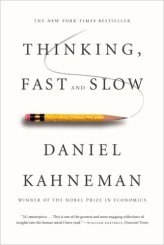Originally published February 6, 2016
This is an exploring post. I have only just begun to read the things necessary to build these concepts in my own mind, but I so wanted to share what I have found. So, here we be in our own quiet alcove, discussing the workings of the mind, again. These are really important ideas, so join me for the hunt—a hunt for how we think and why it matters.
In the process of finishing my manuscript on the Book of Job, I have been researching what makes us tick. Why do we perceive an event, a person, a situation as we do? What is it that makes us believe that we are accurate in our assumptions and interpretations? Is there a way that we can test those assumptions and conclusions while still believing that we are right—and, perhaps, most of the rest of the world is wrong?
I have recently started a hashtag on Facebook, #BreakTheBox. I did this because I like to challenge commonly held presumptions. Not always because I think they are wrong, in whole or in part, but because I firmly believe that whatever you believe, you should know why you believe. That is very hard work—and here is the reason why.
I am currently reading Thinking, Fast and Slow, by Daniel Kahneman. Professor Kahneman won the Nobel Prize for Economics in 2002 for his work on decision making. Along with his research partner, Amos Tversky, he revolutionized what we know about how we think, how we make decisions. Professor Tversky would have shared the prize, if he had still been living.
Here are the basics. Our perceptions of subconscious and conscious thought go far deeper than what we may expect. Kahneman uses terms fairly common in the field; System 1 (the subconscious) and System 2 (the conscious). How these two systems interact is the basis of everything we do and think—everything. That makes it crucial to understand that interaction if you truly want to be the master of your fate, the owner of your mind.
System 1 is the quick thinker. By accumulating all of the information that you are in contact with, the things your senses bring to you, and sorting through that sea of data to arrive at—what makes you comfortable, what feels right. As you can see, this is the basis of our intuitive thought. It is an efficient way for our brains to work because it happens quickly and, for the most part, the reactions are based on past experience. It also allows us to make seemingly instantaneous decisions for our own safety or well-being—such as flight or fight choices.
This is also, at times, an unreliable decision-making process. It can be influenced by such things as presentation of the data (was it in a clear font with soothing colors and using grammar in the comfort zone of the reader). Or, how often the data, or something similar, is encountered. Such as a surprise meeting in one location being less surprising the second time in a different location. System 1 is all about averaging things out and making quick decisions based on, well, gut.
Although not strictly statistical in its processes, for the sake of efficiency, this System 1 also relies on a short-hand version of the data. For instance, in the drafting of a bell curve (natural distribution), once the information regarding probability is acquired, our mind locks on to the higher probabilities and ignores the possibilities. So, once we determine that the incarceration rate of young black men in American is statically higher than whites, Asians or Hispanics, we assume that ALL young black men are prison candidates. Consequently, when events happen in the conscious world, our decisions are guided by a presumption made on incomplete data. This becomes an even stronger influence as we gravitate to information that reinforces what we already know, beliefs and interpretations that are within our comfort zone.
Kahneman describes System 1 as highly associative. It links bits of data to previous information and then builds on that link, whether or not there is a clear correlation. In one example he mentions a test question asking the reader if a man who is described as quiet, introspective, and a loner would most likely be a farmer or a librarian. Statistically, there is an overwhelming response that this is a librarian. Here’s the catch. In my mind it was the farmer. Why? I know both, but I am as familiar with farmers as I am with librarians and so I had a wider associative memory on which to base my assessment. Statistically, there are more farmers than librarians meaning that the probability is higher that the person described is a farmer. That, however, is something that System 2 must discover.
This is not a condemnation of our subconscious mind. This is how our minds are built and it works this way to be efficient with the resources at hand. Here, then, is the catch. Unless you want to be guided by your over-reactive, intuitive subconscious, you need to more actively pursue thinking with System 2. This takes work and our minds are notoriously lazy—they like to find the easy way out. And it does not matter how intelligent the thinker is. There are also physiological reasons why our conscious minds cannot maintain a constant level of focused attention. What, then, is the answer?
We can engage in reprogramming our subconscious. This doesn’t mean we have to question each and every thought and impulse. What it does mean is that we should actively pursue the verification of the associative influence on which our decisions are made. When we hear something that seems right, we should try to understand why this is so. Have we actually thought about the logical end result of our decision or association? How much dis-information is shared on social networks without verification because the piece at least sounds like what the person wants to hear?
To give you food for thought, I leave you with this:
Roses are flowers.
Some flowers fade quickly.
Therefore some roses fade quickly.
Well, maybe, maybe not… Some roses might fade quickly, but the presumptions detailed here which led to that conclusion are not directly related; and therefore, not a basis to decide. You see, the fading flowers might not be roses…
#BreakTheBox




No Comments